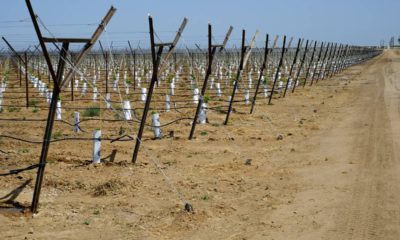Published
6 years agoon
By
CalMatters
Over the past two decades, California’s Division of Juvenile Justice’s inmate population has fallen from 10,000 to around 660. Its annual budget is down 70 percent. Eight of its 11 detention facilities have closed.

According to traditional experts, the Four Horsemen would gallop through Sacramento before trends like these could ever transpire.
No one has credibly explained why teens of every demographic and locale stopped committing crime. Before we rush to “reform” the Division of Juvenile Justice yet again, we need solid analysis, not politician platitudes, not pleasing myths and prejudices, not self-serving credit-grabbing.
Without tough, objective study, we risk doing little more than changing the Division of Juvenile Justice’s address while retaining the same management personnel and policies that most definitely need reforming.
[rlic_related_post_one]
Consider some misconceptions. Despite its “juvenile” name, the division is really an adult agency. Its latest report shows just 146 of the 661 inmates in its facilities are under age 18; more are 20 and older. The division’s growth population will be age 21-25 under new proposals in the governor’s budget.
While some advocates still recite debunked notions that adolescents are innately driven to risk and crime by their undeveloped brains and peers — a particularly silly notion now that teenagers are less crime-prone than middle-agers — teens still getting arrested overwhelmingly suffer the most disadvantaged conditions.
Here’s a modest alternative to address these issues and other state problems. Step back and view the Division of Juvenile Justice as a cog in California’s larger criminal justice, human services, and environmental framework. Reorganize the division’s Pine Grove Conservation Camp and local detention camps, which are largely empty, the Department of Corrections and Rehabilitation’s fire camps, and the California Conservation Corps into a new division that employs civilians and offenders who are assessed as low risk on projects to improve state lands and facilities.
California already operates such crews, though not in optimized fashion, and has targeted the Conservation Corps for expansion. Newsom proposes more Americorps funding to aid inmates returning to society.


California Pins Vaccine Hopes on Biden Administration


Walters: After COVID-19, Drought Threat Still Looms


Fierce California Winds Fan Fires, Topple Trees and Trucks


Monarch Butterfly Population Moves Closer to Extinction


Newsom Sets New Tone for California, White House Partnership


California Guard Pleads Guilty to Lies in Inmate’s Death




